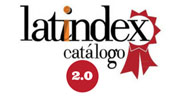The chemical substances and the neurotoxic effect on workers
DOI:
https://doi.org/10.29019/enfoqueute.v4n2.28Keywords:
Neurotoxic, insecticides, organic solvents, heavy metals, central nervous systemAbstract
(Received: 2013/10/02 - Accepted: 2013/12/13)
Tens of thousands of workers are exposed to pollution by the neurotoxicity found in their different workplaces, small businesses, handcrafting industries and even at home. The problem gets worst due to the lack of information on the risks posed by these substances and the safety controls to be taken during its use, on the other hand, the overconfidence that exists about the abstraction of this danger when it comes to the exposure to small doses of toxicity by ignoring the cumulative effects of these substances every time they enter the body. In Ecuador, nowadays there are few studies that distinguish this exposure to these substances, and none on the incidence of the neurotoxic syndrome, considering it an important field to research. Workers who are exposed to chemical toxic substances are now associated to adverse human health effects, due to its aggression and because of the worker´s safety before breaking health directly. They enter the body by the respiratory, dermal or digestive system, and show a great affinity with the body grease so that it accumulates and affects the different organs, tissues, the central nervous system, the bone marrow and liver. Immediate acute and chronic long-term effects were detected due to the intensity and duration of the exposure. Some symptoms include drowsiness, loss of appetite, headache, dizziness, depression, anxiety, nervousness, fatigue, irritability, memory problems, mental sluggishness, apathy, seizures, motor skills incoordination, genetic alterations, among others.
Downloads
Downloads
Published
Issue
Section
License
The authors retain all copyrights ©.
- The authors retain their trademark and patent rights, as well as rights to any process or procedure described in the article.
- The authors retain the right to share, copy, distribute, perform, and publicly communicate the article published in Enfoque UTE (for example, post it in an institutional repository or publish it in a book), provided that acknowledgment of its initial publication in Enfoque UTE is given.
- The authors retain the right to publish their work at a later date, to use the article or any part of it (for example, a compilation of their work, lecture notes, a thesis, or for a book), provided that they indicate the source of publication (authors of the work, journal, volume, issue, and date).
























